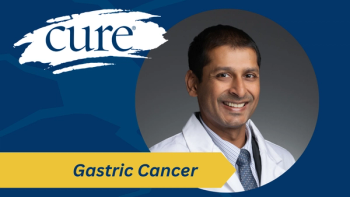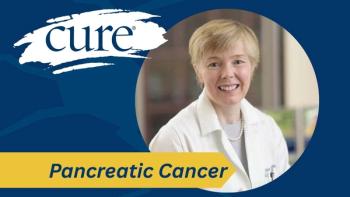
How Robotic Surgery Can Impact Outcomes For Those With Lung Cancer

Key Takeaways
- Robotic and video-assisted thoracic surgery have revolutionized lung cancer treatment, minimizing trauma and shortening recovery times.
- Minimally invasive techniques enable complex procedures, allowing patients to return to normal activities within weeks.
CURE spoke with a thoracic surgeon about the impact of minimally invasive surgery for patients.
For patients with lung cancer, advancements such as robotic surgery and video-assisted thoracic surgery have dramatically changed outcomes and recovery times, Dr. Geoffrey B. Pelz explained in an interview with CURE.
To delve deeper into this topic for patients, Pelz, a thoracic surgeon with Hackensack University Medical Center in New Jersey, sat down for an interview with CURE in commemoration of World Lung Cancer Day, held annually on Aug. 1.
CURE: As a thoracic surgeon specializing in minimally invasive techniques, how have advancements like robotic surgery and video-assisted thoracic surgery improved outcomes for patients with lung cancer?
Pelz: Minimally invasive surgery, and specifically robotic surgery, has definitely made a huge difference in patient care and outcomes over the past couple of decades. It is certainly different from the old days when a huge incision would be made on a person's side, cutting through a lot of muscle, spreading the ribs apart, and even cracking the ribs. This caused a lot of trauma and, in addition to an increased length of stay for the initial hospital visit, led to many issues with post-op pain and recovery. A lot of that has really been mitigated with the advent of minimally invasive surgery.
For doing even more complex lobectomies for lung cancer, by performing these minimally invasively, many patients can leave the day after surgery, and within about two weeks, they have recovered to where they can get back to doing most of their normal activity. Within a couple more weeks, they are back to living their lives. So, it has really made a big difference in getting people the care they need and then getting them back to their lives and back to where they were before.
Are there new surgical technologies or treatment options for lung cancer that you find particularly promising for the future, or that patients should keep their eye on?
In general, this minimally invasive and robotic surgery has certainly come a long way, and the field is shifting towards lesser resections for patients. Previously, if anyone had any type of lung cancer, the standard was to perform a lobectomy, which involved taking out a third or a half of the lung. Now, depending on where it is located, we can do wedge resections for earlier-stage tumors.
Especially with the advent of robotic surgery, we do a lot of what are called segmentectomies. You can subdivide the lung into different segments and perform lung-sparing surgery. This is still an appropriate cancer operation where you get the tumor out with negative margins and are able to adequately stage the patient by sampling lymph nodes, but you can obviously spare a lot of normal lung tissue.
This definitely improves patients' quality of life afterward.
What advice can you give patients to maintain lung health and recovery after lung cancer surgery?
So, the most important thing after lung cancer surgery is to really be up, walking around, and staying active. Nobody gets better lying in bed, where they are at risk for pneumonia, blood clots, and things of that nature. It's important to have good pain control, and we focus on that during the surgery and afterward. We need patients to really be up and walking around, as that's the best way to keep their lungs clear and prevent complications. This certainly starts in the hospital, but it's also very important once you get out of the hospital.
Obviously, patients who were able to undergo minimally invasive procedures have a head start on that recovery process. Just staying active and obviously doing the usual things like trying to avoid smoking and addressing other general lung health issues are important. But really, walking is the absolute best thing for recovery.
For more news on cancer updates, research and education,





